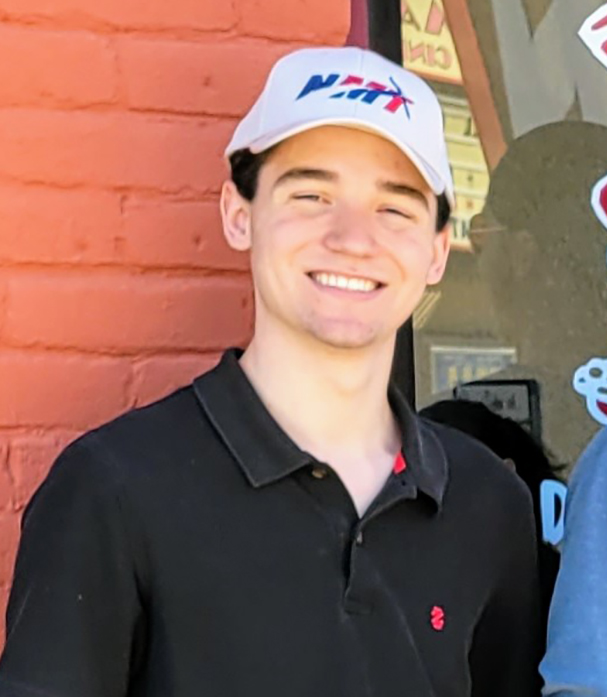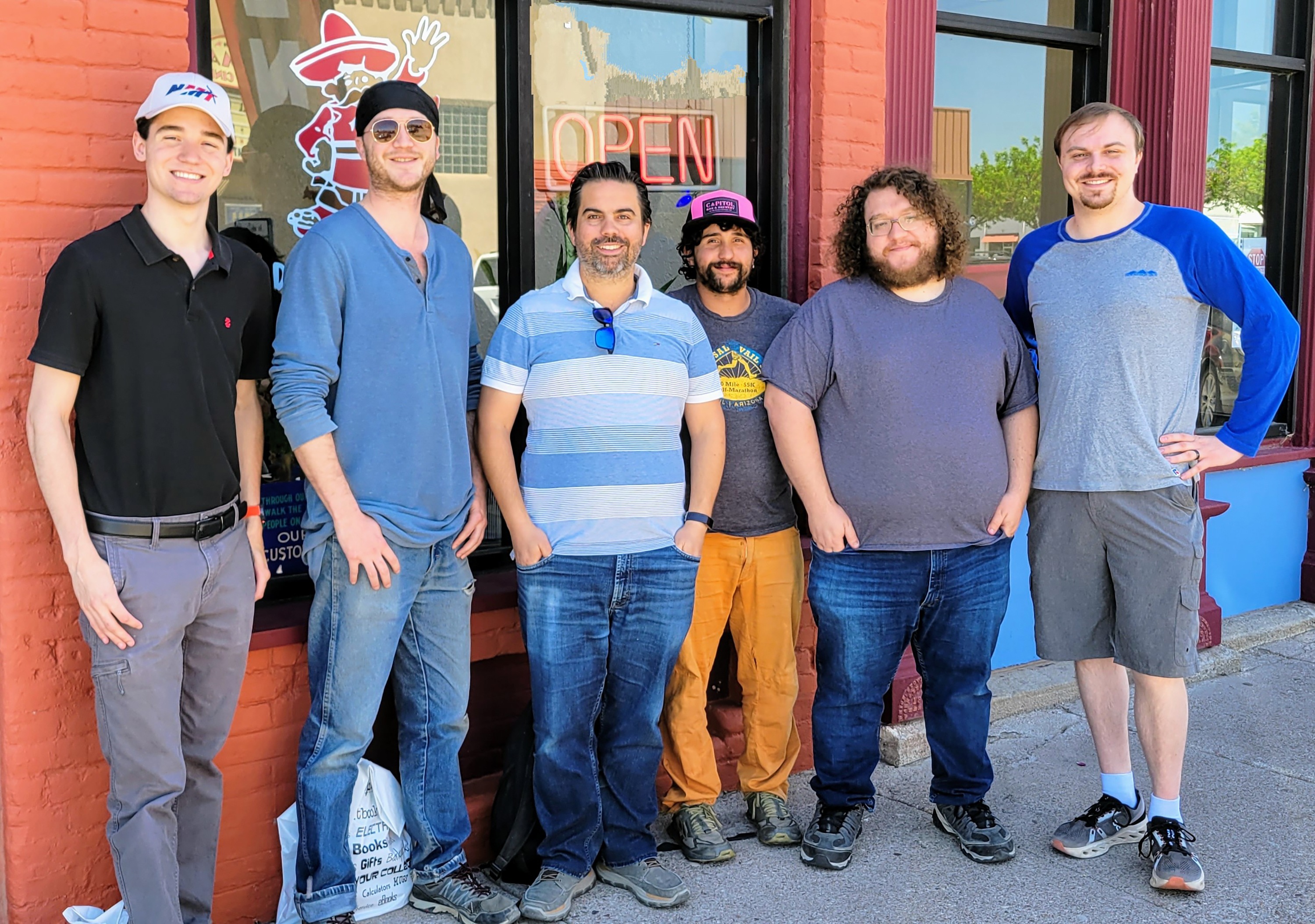New Mexico Tech Research Opportunities Open Doors for Undergrads
Oct. 9, 2024
2024 alumnus Brandon Smith jumped from B.S. degree into Ph.D. program at Penn State

Brandon Smith, a New Mexico Tech 2024 graduate with a physics major, atmospheric physics option, made significant strides as an undergraduate in research. His research assistance on “sprites,” which are very brief lightning discharges occurring at the top of the atmosphere, helped him achieve two noteworthy accomplishments: Smith was accepted to Penn State, his NMT mentor’s alma mater, to pursue a Ph.D. in electrical engineering, and was the lead author of a study on the topic that was published in Geophysical Research Letters — a high-impact journal from the American Geophysical Union.
Sprites, which can span the size of a city like Albuquerque, first caught Smith’s attention in 2022 when he saw a YouTube video of these elusive events, he said. Later, his advisor Dr. Caitano da Silva, associate professor of physics, informed him that scientists at the U.S. Air Force Academy would be collecting data on them at Langmuir Lab on the remote Magdalena Ridge during the summer of 2023—and Smith eagerly signed on as research assistant.
“It was surreal to step into grad-level research as an undergraduate,” he said. “But we had the idea to use a neuromorphic camera, which is designed to mimic the human eye and is capable of tracking individual pixels for rapid data collection.”
At first that summer, Smith worked with Dr. Geoff McHarg of the USAF Academy, who is the director of the Space Physics and Atmospheric Research Center there, but when his part of the project finished, Dr. McHarg returned to Colorado Springs. “For weeks, it was just me and a groundskeeper on the mountain,” said Smith. He made trips down the mountain once a week for laundry and groceries, but really enjoyed the solitude and focus on the research.
Da Silva noted that Smith not only methodically collected data but also meticulously analyzed it, revealing new insights into the duration of these atmospheric phenomena. “Brandon was an outstanding undergraduate research assistant with the ability to work independently,” said Dr. da Silva. “His precise data analysis led to significant findings” that made him the lead author on the published paper, “Sprite Durations Measured With a Neuromorphic Sensor.” (Link)
A neuromorphic camera had not been used for sprites before—they were thought to be too dim and too fast to be discerned. But Smith said, “Working with [it] has opened up a new world of possibilities.” Smith added that the research goals were more about the camera’s functionality and its power to capture these events.

Brandon Smith (black shirt) with a group of Caitano da Silva's students (Da Silva in striped shirt)
Upon graduation from Eldorado High in Albuquerque, Smith chose New Mexico Tech because he wanted a STEM-focused education in-state. He appreciated the close-knit academic culture and small class sizes that allowed for personal interaction with professors. That led him from wanting to major in “something like physics” to choosing a career in atmospheric science.
There were considerable challenges when Smith entered NMT in fall 2020. His cohort worked through all-virtual classes and being largely confined to their dorm rooms because of the pandemic. Smith attributes his work ethic to managing those challenges, and he enjoyed campus culture once restrictions were relaxed. As president of the Physics Club for two years, Smith engaged in outreach to middle- and high school students as well as incoming first-years.
Upon recommendation from da Silva, Smith is now pursuing a Ph.D. in electrical engineering at Penn State, exploring “green ghosts,” another phenomena that occurs above the sprites about which not much data has been collected. The neuromorphic camera may provide more information for scientists to analyze these aptly named phenomena.
“This work is exciting and so much fun,” Smith said. “There’s a small community in atmospheric science, and it’s pretty cool that I’m now studying with Dr. da Silva’s former mentor,” (Victor Pasko, Penn State’s School of Electrical Engineering and Computer Science.)